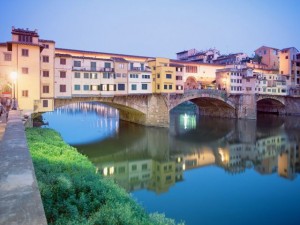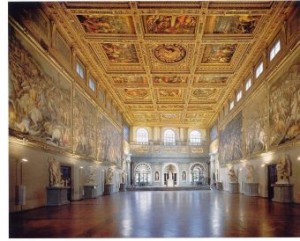 In Florence there are three Davids. One, the original, by Michelangelo, is in the Accademia Gallery, where tourists come to stare at him. I did that too, but I wondered why. What can one know or feel about a piece of art after staring up at it for a couple of minutes? This young, beautiful David, when it was sculpted, was supposed to be a symbol of resistance to Rome and Pisa; I just didn’t see how. To me, David, besides being the hero who defeated Goliath, was also proof that if you were a king, you could get away with murder, as he did with Bathsheba’s husband, Uriah the Hittite, whom he made carry the order for his own execution, to cover up the fact that Bathsheba was pregnant with his own child.
In Florence there are three Davids. One, the original, by Michelangelo, is in the Accademia Gallery, where tourists come to stare at him. I did that too, but I wondered why. What can one know or feel about a piece of art after staring up at it for a couple of minutes? This young, beautiful David, when it was sculpted, was supposed to be a symbol of resistance to Rome and Pisa; I just didn’t see how. To me, David, besides being the hero who defeated Goliath, was also proof that if you were a king, you could get away with murder, as he did with Bathsheba’s husband, Uriah the Hittite, whom he made carry the order for his own execution, to cover up the fact that Bathsheba was pregnant with his own child.
The other two Davids are replicas; one located at the top of a column at the center of the Piazzale Michelangelo and the other on a pedestal in front the municipal building, Palazzo Vecchio, where the original used to stand.
The David at the Piazzale Michelangelo was the one Linda and I came to know best, as our campground was located only half a block away. It was a wonderful campground, with showers and a taverna, and a panoramic view of the Duomo (at whose top the David was originally supposed to stand), the river Arno, and Ponte Vecchio (where I later bought my first boater), and everything else in Florence. In the evening I’d sit on the grass, overlooking the city with some of the other campers, young Germans mostly, drink cheap red wine, and just talk about the problems of the world, philosophy, the history of Florence, the most interesting sights, anything and everything brought to mind by wine under a starry sky in Florence. And some evenings, Linda and I would join the hand-holding, loving young couples slowly circling the David on the Piazzale Michelangelo, a Florence tradition, although we were definitely beyond the age for doing so.
The third of the Davids stood in front of the Palazzo Vecchio, which earlier had been known as the Palazzo della Signiora. From the outside, the building looked like nothing special, an aged, red brick, Romanesque structure with only the David making it somewhat special. Inside, however, it had the most extraordinary room I have ever seen. It was the Salone dei Cinquecento, the meeting room of the 500 member, original governing council of the City. Every wall, and the ceiling, had paintings by great Renaissance artists. Although Leonardo da Vinci and Michelangelo never completed their commissions to paint murals of some of the great battle triumphs of the City of Florence over some of its enemies, Georgio Vassari, as their replacement, had not done badly. Every exquisitely executed painting, on ceiling and walls alike, no matter how large or small, was framed in gilt edging. Below the paintings, against the walls, on pedestals, stood at regular intervals a series of large,
seemingly unfinished, white marble sculptures by Michelangelo.
We heard that in the evening there would be a concert given in this magnificent room, a performance of Beethoven’s 7th Symphony, and of course, neither Linda nor I wanted to miss that. When we arrived in the evening, hundreds of gilded chairs, with red plush back and seats, were neatly arranged in rows, the room was filled with people, and a young orchestra was up front, facing the crowd. It wasn’t the greatest performance of the 7th I’ve heard. The performers were talented young high school students, and the performance could have been better; however, that didn’t matter much. That music, in that room, in that setting, was something very special. Sadly, it was also the last of our musical moments in Italy.


